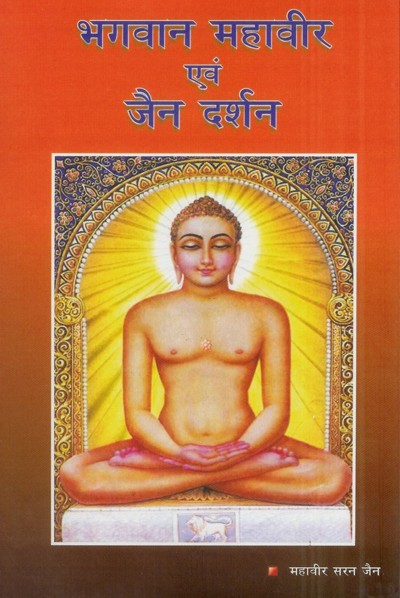1.0 Introduction
The aim of a shramaṇa (श्रमण) or monk is to attain liberation in the life. The aim of a house-holder is to get happiness, peace, satisfaction and harmony in the life. The prototype of the character for a shramaṇa (श्रमण) or monk is freedom from the karmic bondage. The prototype of the character for a householder is to live with happiness and make other people happy by removing their sorrows. For this he has to follow the non-violence in social life. The internal growth of non-violence starts from soul. The vows of non-violence etc. are expected to be practiced by a householder within the limit as an aṇuvrata.
The concept of soul or jīva in Jain philosophy is different with so many other religions and philosophies. There are infinite independent souls. These are categorized into two parts - liberated and non-liberated. Infinite knowledge, perception and bliss are the intrinsic qualities of a soul. These qualities are fully enjoyed unhindered by liberated souls, but obscured by karma in the case of embodied souls resulting in karmic bondage since time immemorial and because of this, non-liberated souls are in a cycle of births and deaths.
“All men who are ignorant of the Truth are subject of pain; in the endless saṁsāra they suffer in many ways.”
(The Uttarādhyayana Sūtra, 6/1)
Each soul is responsible for its actions and experiences its results. Each soul is always independent, characterized by consciousness etc., having a separate existence and never a part of any so-called single ultimate reality. It is possible to achieve liberation.
What conduct should be from point of view to attain the liberation or emancipation. This is the subject of this article. The profound analysis of the conduct of the shramaṇa (श्रमण) or monk has been done in Jain religion and philosophy. It is said in Jain texts that shramaṇa, Sanyata, Ŗṣi, Muni, Sādhu, Vīitarāga, Anagāra, Bhadanta and Dānta, these are designation used for monks with ideal behaviors.
समणो त्ति संजदो त्ति य, रिसि मुणि साधु त्ति वीदरागो त्ति।
णामाणि सुविहिदाणं, अणगार भदंत दंतो त्ति ।।
Samaṇo tti samjado tti ya, ṛṣi muṇi sādhu tti vīdarāgo tti.
Ṇāmāṇi suvihidaṇaṁ, aṇagāra bhadanta danto tti...
श्रमण इति संयत इति च, ऋषिर्मुनिः साधुः इति वीतराग इति।
नामानि सुविहितानाम्, अनगारो भदन्तः दान्तः इति।।
(Samaṇa Suttam, 336)
The Jain texts are also emphasized that in this world, there exists many ill-behaved monks who are called monks; a pseudo-monk should not be called a monk; but a true monk alone must be called a shramaṇa (श्रमण).
बहवे इमे असाहू, लोए वुंच्चति साहुणो।
न लवे असाहुं साहु त्ति, साहुं साहु त्ति आलवे ।।
Bahave ime asāhū, loe vuñccati sāhuṇo.
Na lave asāhuṁ sāhu tti, sāhuṁ sāhu tti ālave…
बहवः इमे असाधवः, लोके उच्यन्ते साधवः।
न लपेदसाधुं साधुं: इति साधुं साधुं: इति आलपेत्।।
(Samaṇa Suttam, 338)
There is a detail description about the conduct of a shramaṇa (श्रमण) or monk in the third part of “Pravachan Sāra” and in “Niyama Sāra” (Gāthā 56 to 158) of ācārya Kundkund. ācārya Kundkund has stated that,
“A shramaṇa (श्रमण) or monk does not entertain attachment either for food or for fast, either for residence or for touring, or for paraphernalia, or for co-monks, or for unhealthy gossip”.
(Pravachan Sāra: ācārya Kundkund, 3/215)
It is also said in Jain texts that: “those who desire to attain purity must practice penance unnoticed and without any desire for praise. Shramaṇa (श्रमण) or monks are free from attachment, self-conceit, companionship and egotism, they treat impartially and equally all living beings, whether they are mobile or immobile.”
निम्ममो निरहंकारो, निस्संगो चत्तगारवो।
समो य सव्वभूएसु, तसेसु थावरेसु अ।।
Nimmamo nirhaṁkāro, nissaǹgo cattagāravo.
Samo ya savvabhūesu, tasesu thāvaresu a...
निर्ममो निरहंकारः, निःसंगस्त्यक्तगौरवः।
समश्च सर्वभूतेषु, त्रसेषु स्थावरेषु च।।
(Samaṇa Suttam, 346)
The presentation of the complete details of the conduct of a shramaṇa (श्रमण) is not possible here. The researchers, who want to receive further information and wish to have solved their inquirers in this regard, can study the below mentioned texts:
- Dvādaśāṅga: (1) Acārāṅga (2) Sūtrakṛtāṅga
- Cāra Mūla Sūtra: (1) Daśavaikālika (2) Uttarādhyayana etc.
- Ched Sūtra: (1) Niśītha (2) Mahāniśītha (3) Vyavahāra etc.
- Mūlācāra: Acārya Vattakera
- Bhagavati Ārādhanā or Mūlārādhanā: Acārya Śivārya
- Pravachan Sāra: ācārya Kundkund (Part 03)
- Niyama Sāra: ācārya Kundkund (Gāthā 56 to 158)
- Pancavatthuga (Panchvastuka): ācārya Haribhadra
- Pravacanasāroddhāra: ācārya Nemichandra Sūri
- Purusārtha Siddhi-Upāya: ācārya Amṛta Chandra.
"The ultimate goal of the soul is to attain liberation nothing else". How does such ascertaining take place? What is the "path of liberation from the bondage of karmic matter" and what result is attained by following the path”?
The “Dharma” guides the conduct of a person. Jain texts make a systematic statement that “Dharma is supremely auspicious; non-violence, self-control and penance are its essentials.”
All spiritual philosophies including the Buddhist philosophy claim that there is the elimination of the bondage of the karma. That is why perhaps all philosophies believe in liberation of the jīva though there concept of liberation is not identical. Many people, in spite of having true knowledge of the religion, even after being interested in that, get unable to practice that. They stop only after either speaking or reading or hearing. Knowing does not mean behaving. Even after hearing about the justified way many people get corrupted. The exponents who preach the religion and do not practice accordingly are the biggest ignorant persons. Keeping their ignorance in the mind it has been stated that:
सुबहुं पि सुयमहीयं, किं काही चरण विप्पहीणस्स।
अंधस्स जह पलित्ता, दीवसयसहस्स कोड़ी वि।।
Subahuṁ pi suyamahīyaṁ, kiṁ kāhī caraṇa vippahīṇass.
Andhassa jaha palittā, dīvasayasahassa koḍī vi...
(Just as a hundred-thousand-crore of lamps kept burning are of no use to a blind person, of what use is study of numerous scriptures to a person who has no character?)
(ācārya Jinbhadra Gani: Viśeṣāvaśyaka bhāṣya, 1152)
From point of view of right conduct, it is said: “The term equanimity, tolerance, pure-thought, devoid of passions, practice of dharma and devotion to one's own self, all of these are said to be one and same.”:
समदा तह मज्झत्थं, सुद्धो भावो य वीयरायत्तं।
तह चारित्तं धम्मो, सहाव आराहणा भणिता।।
Samadā taha majjhatthaṁ, suddho bhāvo ya vi̵̵̵᷉yarāyattaṁ.
Taha cārittaṁ dhammo, sahāva ārāhṇā bhaṇitā...
(ācārya Devasen: Nayacakra Bṛhada, 356)
- The Doctrine of Karma in Jain Philosophy http://www.herenow4u.net/index.php?id=98353
There are many ways or styles of finding out the path of liberation in Jain texts. Amongst them two are generally more expatiated. They are:
- The Path of Liberation by stoppage of karmas (Saṁvara= संवर) and the annihilation of the previously accumulated karmas from soul (Nirijarā = निर्जरा)
- The Path of Liberation: 14 stages of spiritual development (The order of Guṇasthāna/Mārgaṇās = गुणस्थान अथवा मार्गणाएँ)
 Dr. Mahavir Saran Jain
Dr. Mahavir Saran Jain
